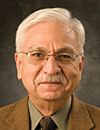MEMBER PROFILE
John Schneider, CFE, CISA, CIA
Chief Gaming Inspector, Pokagon Band Gaming Commission in Michigan
John Schneider, CFE, CISA, CIA, serves as Chief Gaming Inspector at Pokagon Band Gaming Commission in Michigan. As a former IT director, Schneider knows the use of technology can be a key advantage both for fraudsters and the investigators trying to catch them.
Which types of fraud cases are the most interesting to you, personally? Did a certain type of investigation really draw you in?
Inside jobs, such as skimming and cash larceny, are fascinating to me because of the many creative ways people come up with to exploit internal control weaknesses. Investigations into fraudsters at a table game (such as blackjack, roulette, etc.) really draw me in – like a puzzle that must be solved. How did they get away with it? How did we catch them? What controls can be implemented to thwart future attempts? It is truly a cat and mouse environment.
During your career, you have also worked as an internal auditor and as an IT director. How did you make the transition from IT into auditing and fraud?
Technology often is either the tool used to exploit control weaknesses (think hackers), or technology itself is being exploited in order to successfully commit fraud. I was asked many times to conduct fraud investigations as an IT director because I knew the systems and their audit log/reporting capabilities. This logically extended into surveillance reviews, physical and logical control systems, and so forth. In my opinion, fraud examiners of the future – and even the now – must have or develop a solid IT background to be effective in many types of fraud investigations.
So, when the opportunity to join the PBGC came up, I jumped at it. It was a natural transition for me. As a tribal member myself, I am proud to serve the Pokagon Band of Potawatomi Indians.
What do you think are some of the most important things for fraud examiners to keep in mind when working to prevent and detect fraud?
Two things: 1) No internal control system is completely immune from being exploited, and 2) The fraud triangle helps to explain why everyone is a potential suspect. I know that sounds jaded, but how many times have you heard the reaction, “I can’t believe he/she did that” after the guilty party was identified?
What advice do you have for other fraud examiners who would follow in your footsteps?
Gain at least a fundamental understanding of IT, learn to assess the effectiveness of internal controls and get your CFE certification, of course. The knowledge and subsequent recognition gained through the certification process has been invaluable. And no, I’m not just saying that because of this interview.
Do you have any hobbies when you're not fighting fraud?
I recently became more involved in tribal gaming regulations at the national level with the National Tribal Gaming Commissioners/Regulators (NTGCR) organization. I also speak at conferences on occasion regarding tribal gaming regulation, IT, audit and fraud. I play guitar, tennis and basketball in my spare time.
Read John's full profile on ACFE.com.




